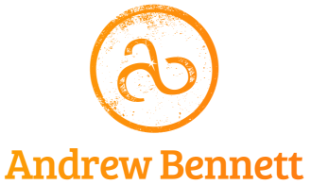A 30-second spot during the Super Bowl is fetching between $3.7 and $4 million this year. Clearly advertisers place a very high value on getting into your thoughts. Leaders would do well to recognize this as a strategy for harnessing the potential of people. It is a strategic advantage when people have your organization’s goals at the top of their minds and the bottom of their hearts.
Leadership Lessons From Super Bowl Advertisers
Have an emotional impact
All the best ads evoke feelings. Feelings are much more powerful than facts. In neuro-evolutionary terms we’ve been using feelings a lot longer than rational thinking so it makes sense to cater to feelings first – it’s simply more powerful.
Humor works very well in Super Bowl ads. Two years ago the most popular ad was Volkswagen’s “The Force” featuring a miniature Darth Vader. But serious drama is powerful too – see Chrysler’s “Halftime In America” featuring Clint Eastwood.
Leaders:
- Be authentic – a combination of transparency and vulnerability about your own struggles. This kind of openness creates trust, which is arguably the most important quality of a strong leader.
- Use humor strategically. I’m not talking jokes here. You’re not a stand up comedian, you’re a leader. The most powerful use of humor is about your own humanity. When you tell stories of your struggles with humility and an ability to laugh at your own follies, people feel connected to you and they trust you.
- Tell stories about the amazing things people are accomplishing right now. Many leaders talk about their company’s performance, which is good to know, but what inspires people are stories about their colleagues – flesh-and-blood people – and the great things they are doing.
- Tell stories about the future – what the company will look like and the impact of the company on the world. Bill Gates’ original vision for Microsoft was to put, “a computer on every desk and in every home,” and with a market share of 97% at one point it seems as though they did very well. Folks working at Microsoft in those days report that this was a very inspiring goal. It’s important to point out that the goal was not stated in terms of market share or profitability numbers. Gates did not say, “Microsoft will own 97% of the market.” Sharing numbers, and the gaps between where you are and where you want to be, will not inspire most people.
Engage people
For over a decade the Gallup organization has led research into employee engagement, and its impact on organizational performance is well documented. Super Bowl advertisers are using a variety of tactics to engage viewers.
- Last year Paramount Pictures released an augmented reality app for its upcoming film “Star Trek Into Darkness,” and on Super Bowl Sunday smartphone owners used it to unlock special content from the film.
- A number of advertisers engage people through preliminary advertising designed to build anticipation. Toyota’s “Wish Granted” ad had over 11 million hits BEFORE game day.
- According to Twitter, last year’s Super Bowl drew more than 13 million tweets. Twitter users sent an average of 10,000 tweets per second (!) during the final three minutes of Super Bowl XLVII. Each team has it’s own Twitter account, as do all the players.
Leaders:
- Make information about the company interactive.
- Make sharing information exciting, quick, and fun. Something people actually enjoy doing.
- Enable everyone to interact with each other – make hierarchy irrelevant when it comes to sharing.
- Use Twitter and Facebook for company initiatives.
Repeat, Repeat, Repeat
Super Bowl Sunday is only the start of the campaigns. The messages continue to run for weeks and months. In addition, social media enables message repetition to spread virally and the impact of your message can be measured by the number of people who seek you out. Chrysler’s “Half Time” ad has been viewed over 11 million times and VW’s “Force” over 56 million.
Leaders:
- Your key messages must be repeated over and over. The most powerful leaders always deliver the message a little differently each time, while maintaining careful consistency to the core point.
- Speak your key messages constantly. Integrate the company’s key goals into every meeting and presentation.
- Deliver messages through a variety of vehicles. Use social media to track how many people are seeking out information to continually refine your impact on engagement.
Super Bowl advertisers are paying a premium to get a spot in your brain. As a leader, how well are you managing the valuable strategic resource of the brainpower surrounding you?






